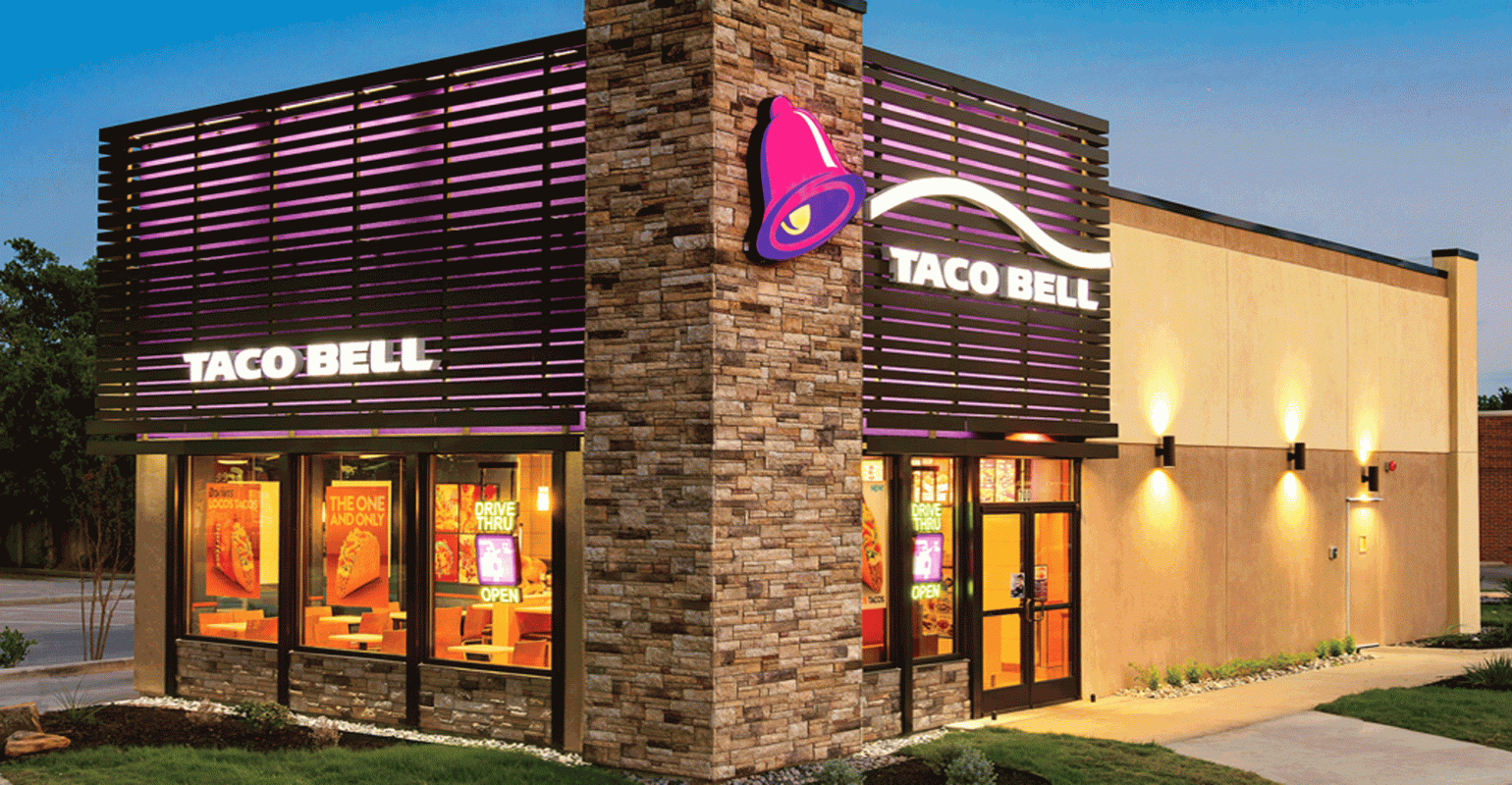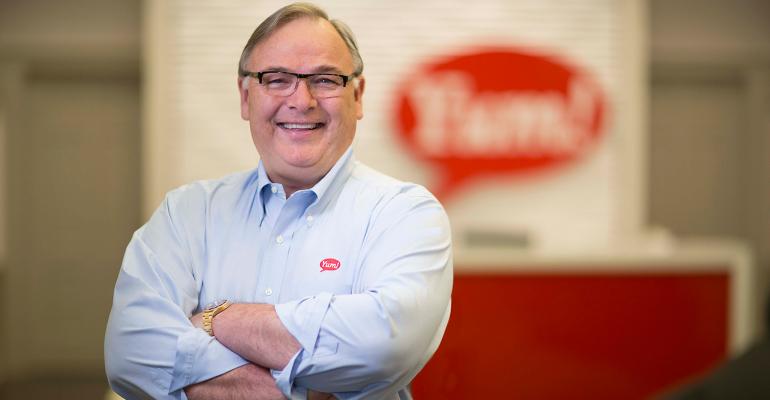Twenty years ago this month, PepsiCo spun off its restaurant division into a separate company. The result was the creation of one of the largest, most enduring restaurant companies on the planet.
Yum! Brands Inc., based in Louisville, has become a 44,000-unit global behemoth, a company that has brought KFC’s fried chicken to Uganda — and Pizza Hut stuffed crusts into Indonesia. Consumers in North Pole, Alaska can get one of Taco Bell’s Naked Chicken Chalupas.
“If you invested $10,000 into Yum in 1997,” CEO Greg Creed said in an interview with Nation’s Restaurant News, “it would be worth $170,000 today.”
 The company’s growth has not always gone so smoothly. Yum has made some mistakes over the years, and the company has made numerous changes in its operations and organizational structure.
The company’s growth has not always gone so smoothly. Yum has made some mistakes over the years, and the company has made numerous changes in its operations and organizational structure.
But, following a spinoff of its own, Creed believes Yum has the structure in place to grow for years.
“The growth potential for Yum is limited only by our imagination,” he said.
The big spinoff
Creed said he is one of the few employees left from the 1997 spinoff. He took a position with Yum Brands’ Australia 23 years ago, rose through the ranks, and was named CEO of Taco Bell in 2011. Creed replaced David Novak as Yum’s CEO on Jan. 1, 2015.
“I give David a lot of credit for setting bold goals but also creating an amazing culture,” Creed said.
At the time of the PepsiCo spinoff, Yum had about 29,000 locations and $4.4 billion in debt. Novak set plans to double in size, something Yum has since nearly achieved.

“Our brands are stronger,” Creed said. “It’s a more global business and a much more focused business.”
Since the spinoff, Yum has generated a total return for shareholders of more than 1,600 percent. Companies in the S&P 500 index generated a 280 percent return over the same period, according to the company.
Over the 20 years, Yum has established a willingness to take risks to drive growth. Some of those efforts didn’t work out as planned, notably the company’s 2002 acquisition of Long John Silver’s and A&W. Yum initially wanted to create multi-branded units with the combination of the acquired brands and its existing concepts. Nine years later it sold A&W and Long John Silvers, and largely ditched co-branding.
But Yum’s victories have been enormous, none more so than its push for international growth. One such victory came in 2010, when Yum bought the Russian chain called Rostik’s. The brand has since been converted into KFCs, helping Yum grow to 550 KFCs in Russia.
“Despite all the boycotts and all the other things, I think we delivered 30 percent system sales growth the last five years,” Creed said. “When I talk with other executives about Russia, no one is talking about the success they’ve had.”
Yum’s focus on global growth has had an impact on company profits. At the time of the PepsiCo spinoff, 20 percent of the company’s profits came from outside the U.S. Today, that’s up to 50 percent — an amazing increase considering that one of its three brands, Taco Bell, has little presence internationally, something Yum wants to change.

The China spinoff
KFC was the first Western fast food company to open a location in China, in Beijing, in 1987. The brand has gained a first mover advantage there. Pictures of Colonel Sanders are nearly as common there as pictures of Chairman Mao.
Yum kept most of its China stores company owned, rather than franchising like it does in most of the rest of the world. By 2016, Yum had more than 7,000 locations, including KFC and Pizza Hut, and China represented more than half of the company’s total revenues.
Sales in China slowed between 2012 and 2015 amid a pair of food safety crises. The slowing sales added pressure on the company to spin Chinese operations off in 2016. It was the first time a restaurant company spun off part of its operations while retaining ownership of its brands.
Yum China is now a franchisee of Yum Brands. And Yum is refranchising stores in other markets, with the plan to get to 98 percent franchised by the end of next year.

Shareholders thus got stock in a high growth franchisee in a rapid growing market, China, and a major franchisor in Yum. Investors have loved it. The combined stock of the two companies has increased 35 percent since the spinoff.
“From the shareholder perspective, it looks like it was the exact right thing to do,” Creed said. “We were highly franchised outside of China, and high equity inside China. We felt like we had to pick a lane. And the lane we decided to pick was to be more highly franchised.”
In so doing, Yum Brands greatly reduced its capital spending demands, from $1.1 billion to $100 million, giving the company $1 billion in free cash flow that it can return to shareholders or invest in the company.
“To me, it was the right decision, and the results have demonstrated it was the right decision,” Creed said.
He also noted a 2014 decision by the company to reorganize Yum into divisions based on its three brands, instead of divisions based on geography. Few employees in the company now work on more than one brand, and the divisions have helped Yum be a more “brand focused company.”

Future plans: Acquisitions ahead?
The ink was barely dry on Yum Brands Inc.’s plan to spin off its China operations a year ago when analysts began wondering if the company would buy something else. With its brand-centric alignment and a focus on franchising, another acquisition would make sense.
In addition, the company’s plan is to grow system sales by 7 percent a year by the end of 2019. That’s aggressive for a company with 44,000 locations. Another new brand would help achieve that goal.
But Creed said that’s not the plan.
“Everyone says that,” he said. “I personally believe there is so much growth potential with these three brands and opportunities like delivery on all three that I’m really focused on accelerating growth of the three brands, broadening the geographical presence and expansion.
“You never say never. But I believe I’ve got the organization focused on how we accelerate growth with these amazing brands.”
And it wouldn’t take much more to get to that 7 percent sales goal. Worldwide system sales already increased 6 percent in the second quarter ended June 30.
Creed believes the company can achieve that goal with its three existing brands, simply by focusing on unit growth, while taking advantage of current trends.
The company is pursuing delivery.

“Delivery is what the drive thru was 40 years ago,” Creed said. “What comes with that are newer occasions and a higher check.” That opportunity comes with all three brands, he said.
He also believes there’s “massive opportunity to build more units.”
Taco Bell, for one, has barely scratched the surface of its international growth capability. “It’s a tiny brand outside the U.S. compared with KFC,” he said. “We’re really just getting started.”
Creed said that KFC, which now has 21,000 locations, could get to 60,000 global units. “We believe we can expand in a lot of countries,” he said. “We’re just getting into sub-Saharan Africa.”
“Somewhere in the world, a KFC opens every eight hours,” Creed said. “Roger thinks we could get to every five hours.”
And while other segments of the restaurant industry could prove attractive, Creed believes Yum Brands is in the three segments with strong, global potential.
“I love being in Mexican, pizza and chicken,” Creed said. “Those three categories are growing faster than any other category in the industry. We’re ideally positioned in all three.”
Contact Jonathan Maze at [email protected]
Follow him on Twitter: @jonathanmaze




